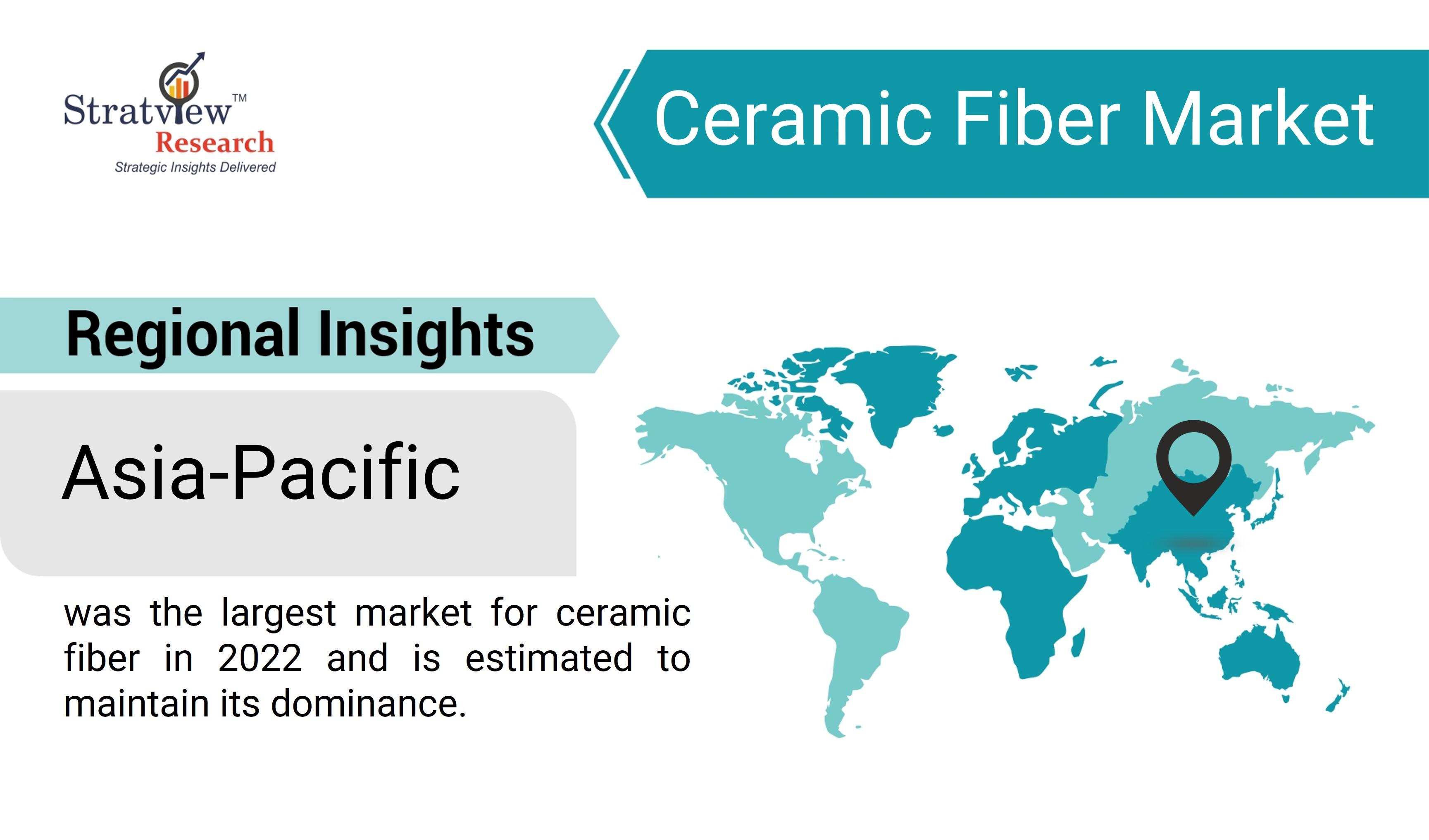Unveiling the Ceramic Fiber Market: Properties, Applications, and Growth Trends

According to Stratview Research, the ceramic fiber market was estimated at USD 2.28 billion in 2022 and is likely to grow at a CAGR of 9.87% during 2023-2028 to reach USD 4.02 billion in 2028.
The global ceramic fiber market has witnessed substantial growth in recent years, driven by the increasing demand for lightweight, high-temperature insulation solutions across various industries. Ceramic fibers, known for their remarkable thermal stability and excellent insulating properties, have become indispensable in a wide range of applications. In this article, we'll delve into the ceramic fiber market, exploring its key properties, diverse applications, and the latest growth trends shaping this dynamic industry.
Understanding Ceramic Fiber
Ceramic fiber is a high-performance insulation material made primarily from alumina-silica compounds. It is characterized by its unique combination of properties, including:
High-Temperature Resistance: Ceramic fibers can withstand extreme temperatures, often exceeding 2300°F (1260°C). This makes them ideal for applications in industries where heat management is critical.
Low Thermal Conductivity: They have low thermal conductivity, which means they effectively insulate against heat transfer. This property is essential for reducing energy consumption and maintaining temperature control.
Lightweight: Ceramic fibers are exceptionally lightweight, making them easy to handle and install. Their low density is advantageous in various applications, especially in aerospace and automotive industries.
Chemical Inertness: Ceramic fibers are chemically inert and resistant to most corrosive substances, enhancing their longevity in harsh environments.
Excellent Thermal Shock Resistance: They can withstand rapid changes in temperature without cracking or deteriorating, ensuring long-term performance in applications with thermal cycling.
Applications of Ceramic Fiber
The versatility and superior properties of ceramic fiber have led to its adoption in various industries:
Metallurgy and Foundries: Ceramic fiber linings in furnaces and kilns help maintain high temperatures for metal melting and casting processes. They offer energy efficiency and reduce heat loss.
Aerospace: Ceramic fiber materials are used in aircraft and spacecraft insulation systems due to their lightweight nature and resistance to high temperatures. They provide thermal protection during re-entry into the Earth's atmosphere.
Petrochemical Industry: Ceramic fiber blankets and boards are utilized for insulating pipes, vessels, and equipment in refineries and petrochemical plants, reducing energy consumption and minimizing heat-related risks.
Glass Industry: They play a crucial role in glass manufacturing, where consistent high temperatures are required. Ceramic fiber linings help control temperature profiles in glass furnaces.
Automotive: Ceramic fiber materials are used in automotive exhaust systems for their ability to withstand high temperatures and reduce heat emissions.
Power Generation: Power plants use ceramic fiber insulation to enhance the efficiency of boilers, steam turbines, and other high-temperature equipment.
Fire Protection: Ceramic fiber fireproofing materials are employed in building construction to provide fire resistance and protect structural components.
Growth Trends in the Ceramic Fiber Market
Several trends are driving the growth of the ceramic fiber market:
Energy Efficiency: Increasing emphasis on energy-efficient solutions in industries such as metallurgy, petrochemicals, and power generation is boosting the demand for ceramic fiber insulation.
Aerospace Advancements: As the aerospace industry continues to innovate, ceramic fibers are finding expanded use in spacecraft and aviation applications due to their lightweight, high-temperature resistance properties.
Sustainable Solutions: Eco-friendly and sustainable insulation materials are gaining traction. Ceramic fibers, with their long lifespan and low environmental impact, align with these sustainability goals.
Emerging Technologies: Ongoing research is focused on developing advanced ceramic fiber materials with enhanced properties and improved performance.
Stringent Regulations: Regulations pertaining to fire safety and energy efficiency are driving the adoption of ceramic fiber fireproofing materials in the construction sector.
Conclusion
The ceramic fiber market is poised for continued growth, driven by its exceptional properties and diverse range of applications. As industries strive for higher efficiency, safety, and sustainability, ceramic fiber materials are likely to remain a preferred choice for insulation and thermal management solutions. As technology evolves and industries demand more robust and versatile materials, ceramic fibers are expected to play a pivotal role in shaping the future of various sector.
- Art
- Causes
- Crafts
- Dance
- Drinks
- Film
- Fitness
- Food
- Juegos
- Gardening
- Health
- Home
- Literature
- Music
- Networking
- Other
- Party
- Religion
- Shopping
- Sports
- Theater
- Wellness
- IT, Cloud, Software and Technology


